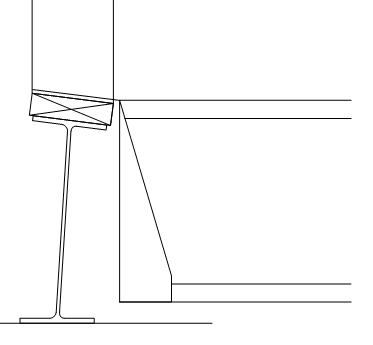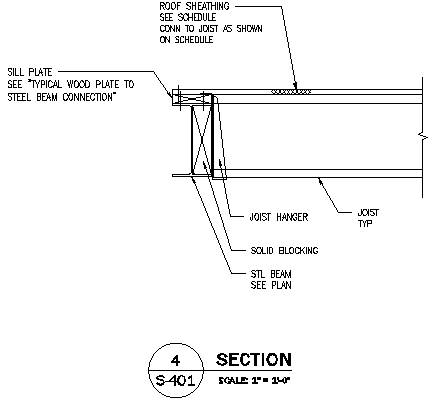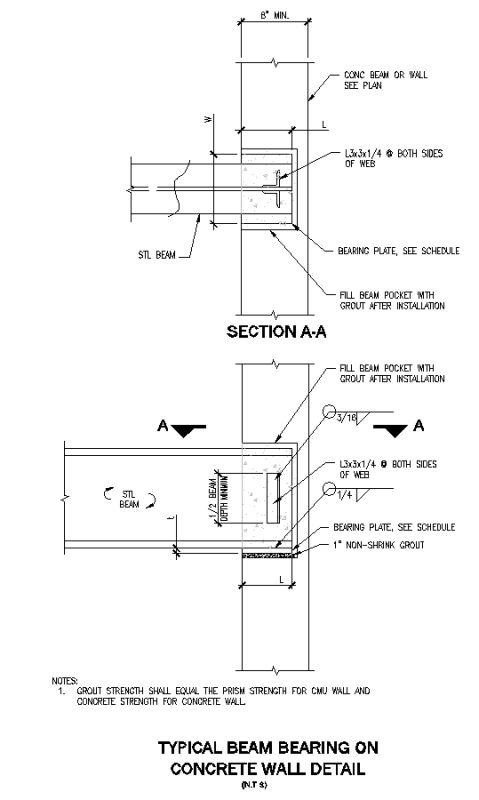Rich Zimmerman
Mechanical
I've got a steel beam coming in perpendicular to an ICF wall). It sits on top of the wall (no pocket per-se). Both ends of the beam are supported the same way. Normally I would just drop a bearing plate with non-shrink grout and then weld the beam to the plate at the job site. However on-site welding requires a special inspection by an engineer and a trip from a welder and it occurs to me that perhaps I could just work something up where the beam gets bolted to the top of the ICF wall somehow.
So, two question:
1. Anyone have a detail where the beam gets bolted to the wall rather than welded to a bearing plate? I'm thinking a couple 5/8" bolts at the beam gage through the bottom flange set maybe 8" into the ICF. Am I missing something important here?
2. It occurs to me that the design might allow me to drop the beam a few inches and mount it into a pocket. After the beam is set, grout around it. So, in that situation would I have to weld the beam or would the grout around the beam serve to hold the beam from moving.
So, two question:
1. Anyone have a detail where the beam gets bolted to the wall rather than welded to a bearing plate? I'm thinking a couple 5/8" bolts at the beam gage through the bottom flange set maybe 8" into the ICF. Am I missing something important here?
2. It occurs to me that the design might allow me to drop the beam a few inches and mount it into a pocket. After the beam is set, grout around it. So, in that situation would I have to weld the beam or would the grout around the beam serve to hold the beam from moving.



